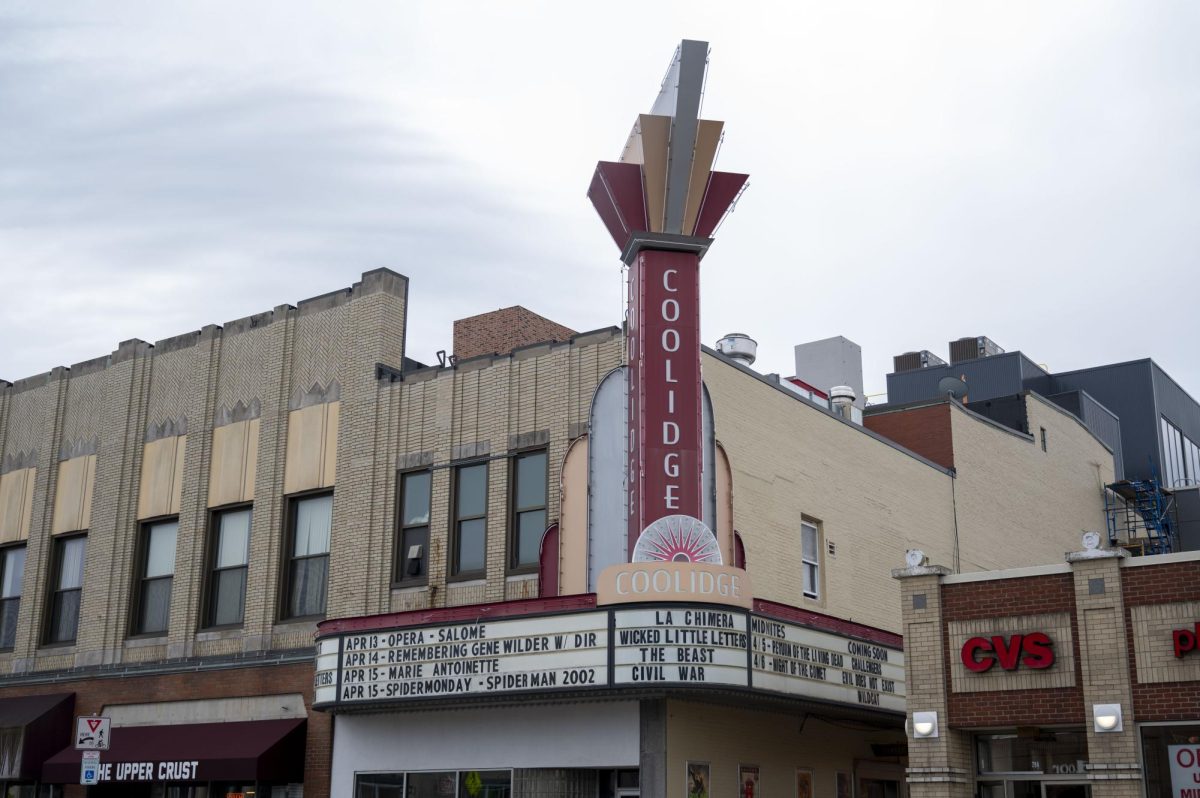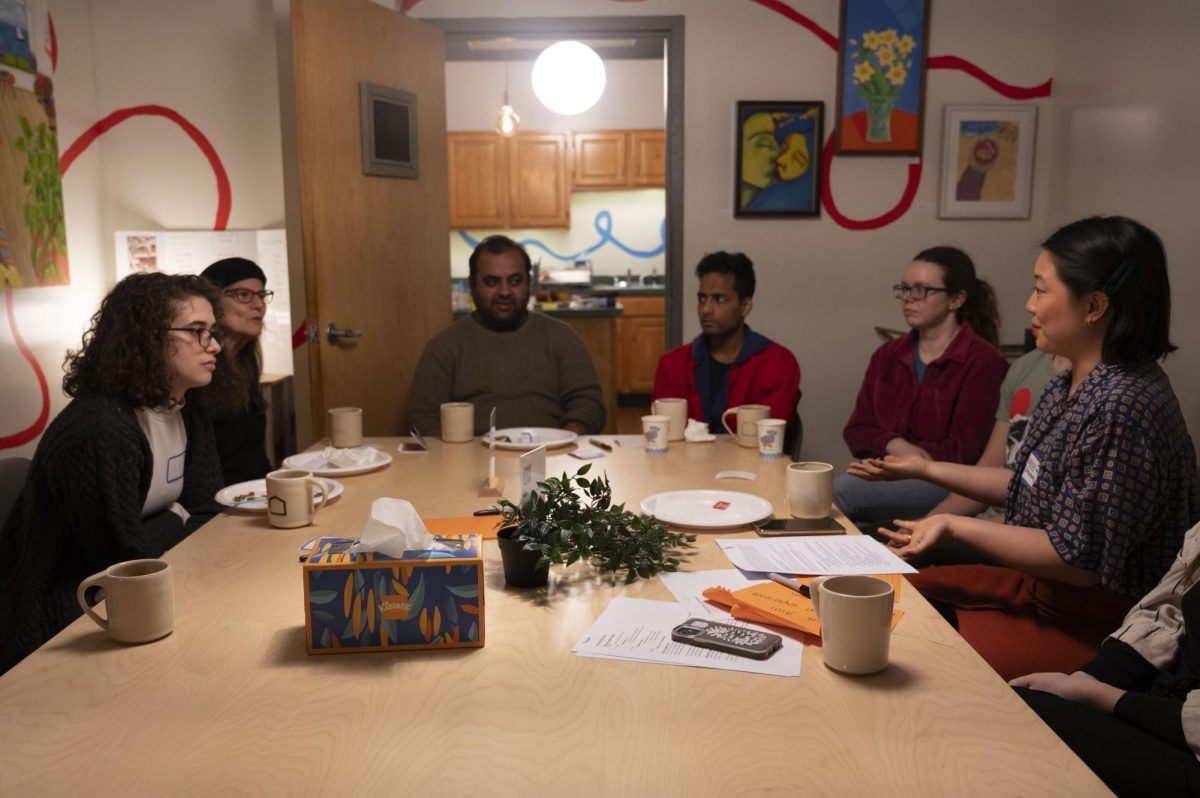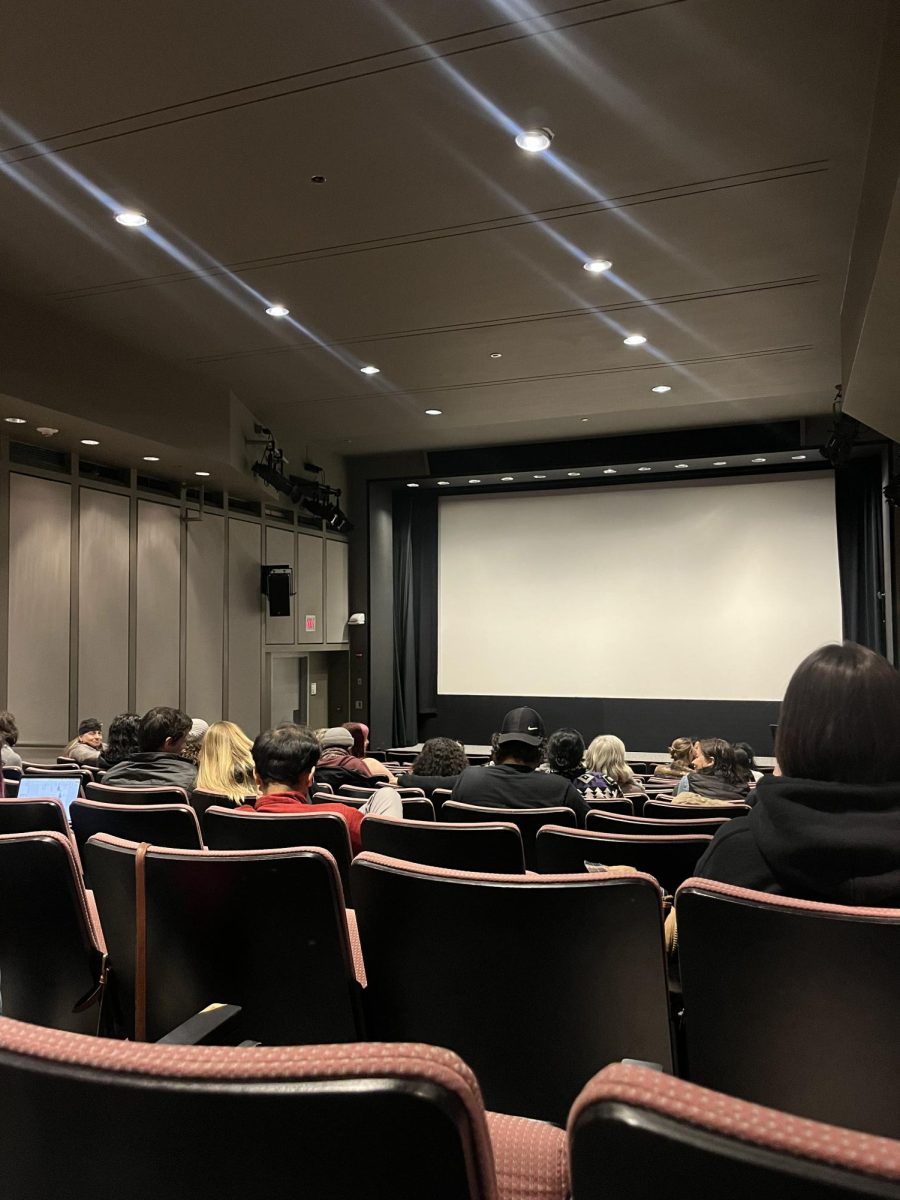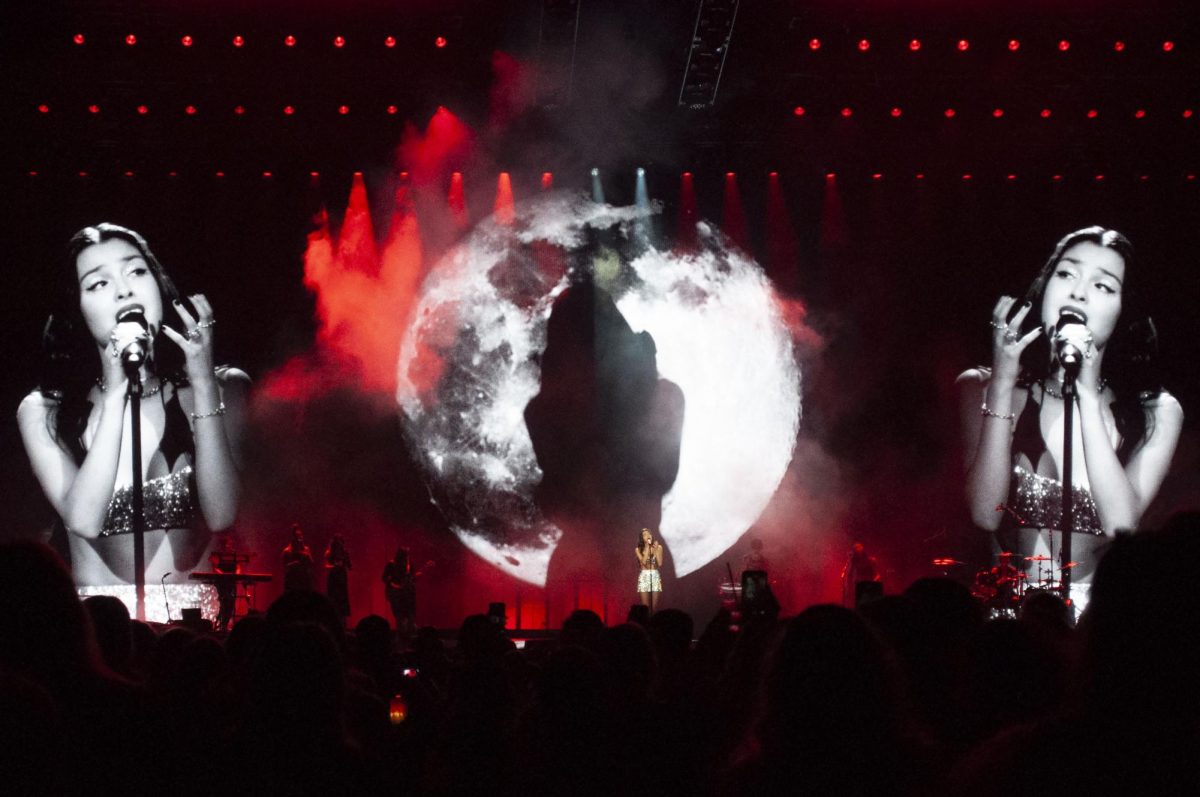By Juan A. Ramirez, news staff
The Northeastern University (NU) Wind Ensemble played its final concert of the semester – a themed performance titled “Music & Machines” – on Sunday, April 3 at the Fenway Center.
“In the spring, I’ve been doing different themed concerts,” Director of Bands Allen Feinstein said. “I always find it rewarding to connect the pieces to a theme, and there were a couple of pieces that I wanted to perform.”
The idea for the mechanical theme stemmed from a new piece titled “Winding Up/Winding Down,” composed by Michael Gandolfi and co-commissioned by the NU Wind Ensemble last year. Planning to premiere the composition in the spring, Feinstein engineered the rest of the concert’s program to complement the clarinet piece.
“The title made me think of a machine winding up, so I thought of all this other repertoire I could do with that theme,” Feinstein said. “It’s arbitrary, but fun. One of the things I like to do with the group is work with film, so as soon as I had the machine idea, I thought I’d have students write music to scenes from ‘Metropolis.’”
“Metropolis,” a landmark 1927 silent film with science fiction roots, has a long history of composers trying their hand at scoring it. Two major scenes from the movie – the former a mad scientist explaining his new project and the latter the unveiling of his humanoid robot – were projected behind the ensemble, with original compositions by two different students accompanying the action. Melissa Rorech, a third-year music composition and technology major, composed the music for the second scene.
“It’s such a classic film; it has a lot of weight to it,” Rorech said. “The scene I scored is one of the most groundbreaking scenes in cinematic history because of its special effects. I went into it with an open mind and felt it should be very heavy and brass-filled since it was a big transformation.”
To build further upon the “Music & Machines” theme, two unlikely machines were chosen to accompany two pieces titled after them: “Like Riding A Bicycle” and “The Typewriter.” While the mechanical spinning of a bicycle’s wheel was featured only in the introduction and closing of its piece, a typewriter became the main percussion instrument of its respective composition.
“It’s stressful to be in front of the ensemble playing a solo, no matter how hard the part is,” Denzil Leach, a freshman bioengineering major and percussionist, said. “I’d never actually used a typewriter, so figuring out how to not get it to jam was an interesting process.”
Feinstein said the 1950 composition reflected “a time when typewriters were ubiquitous and their sound was everywhere,” a concept that gives the piece an everyday sound and further establishes the connection between music and machines.
“In the last 30 or 40 years, adding any kind of experience to the concert experience that is not just sitting in your chair watching a conductor wave his arms can be a positive addition, as long as it has merit,” Feinstein said. “It adds new dimensions.”
Photo courtesy Northeastern Center for the Arts













